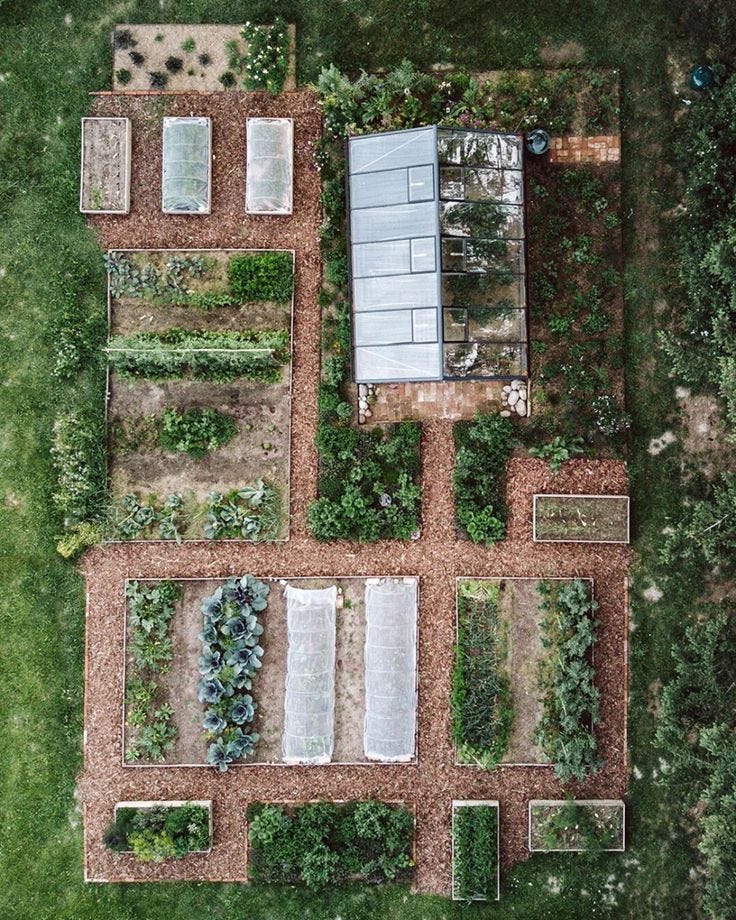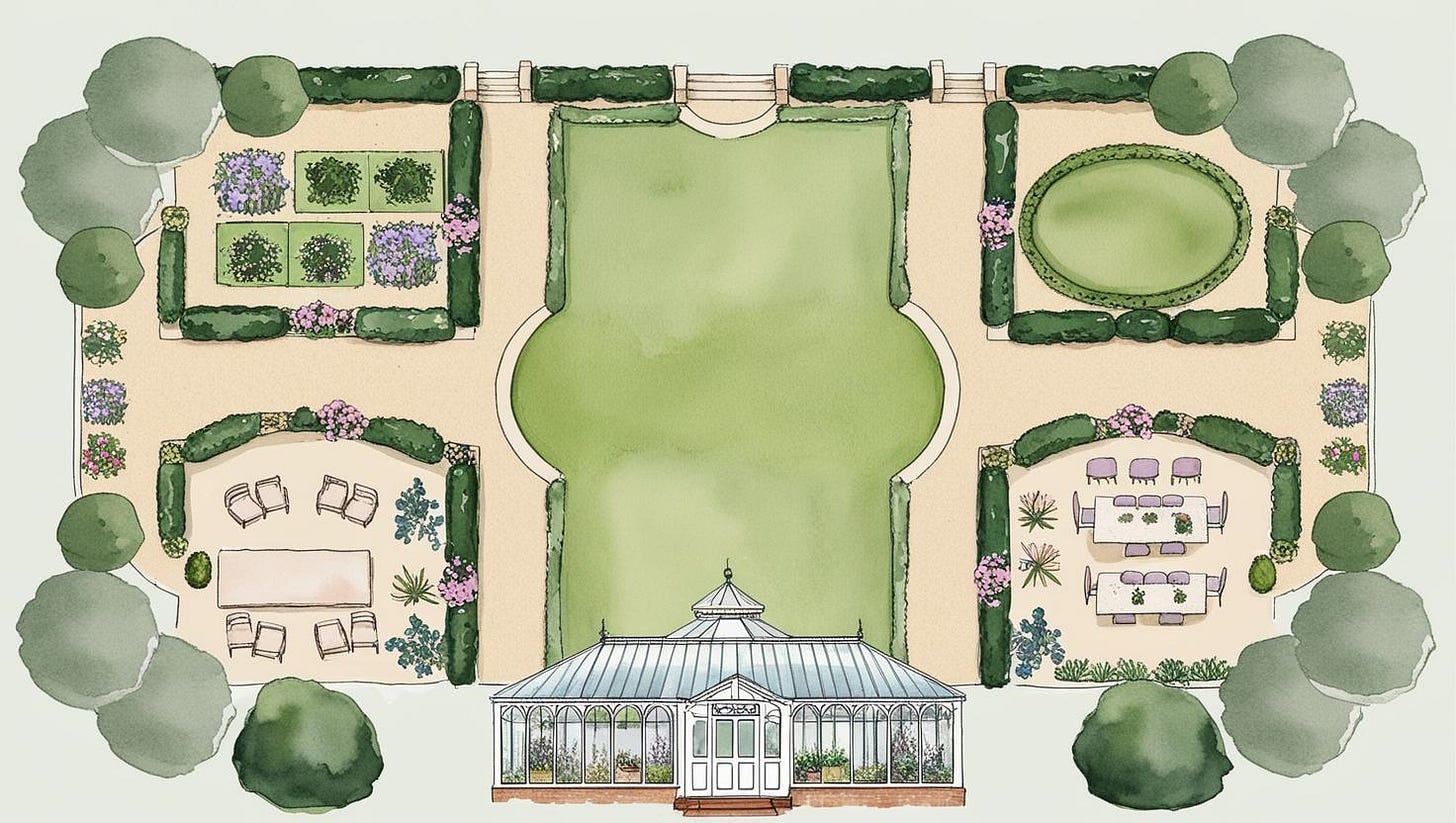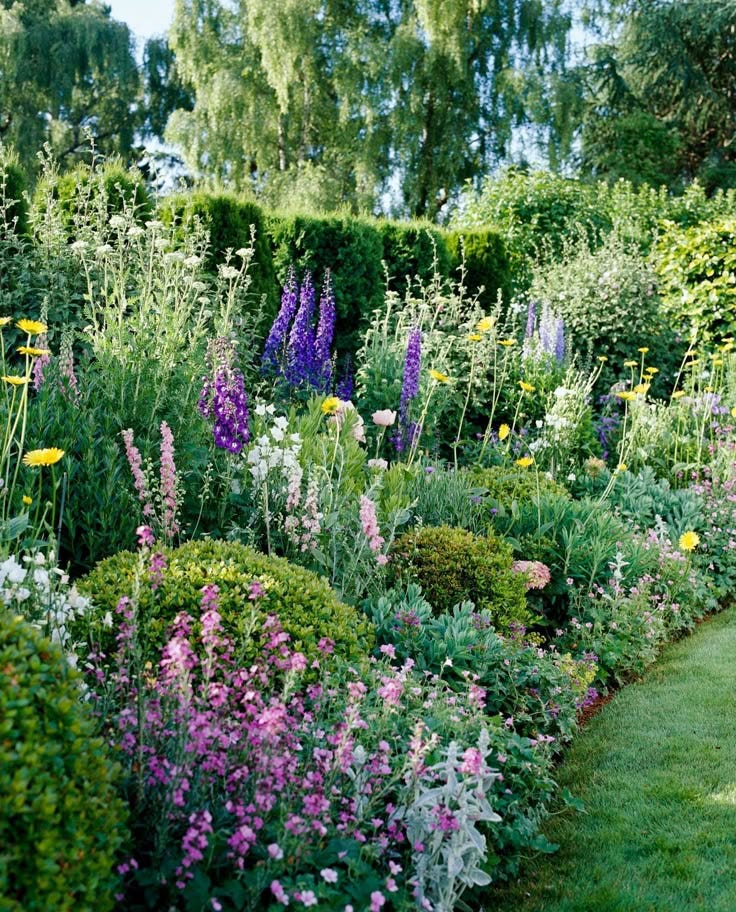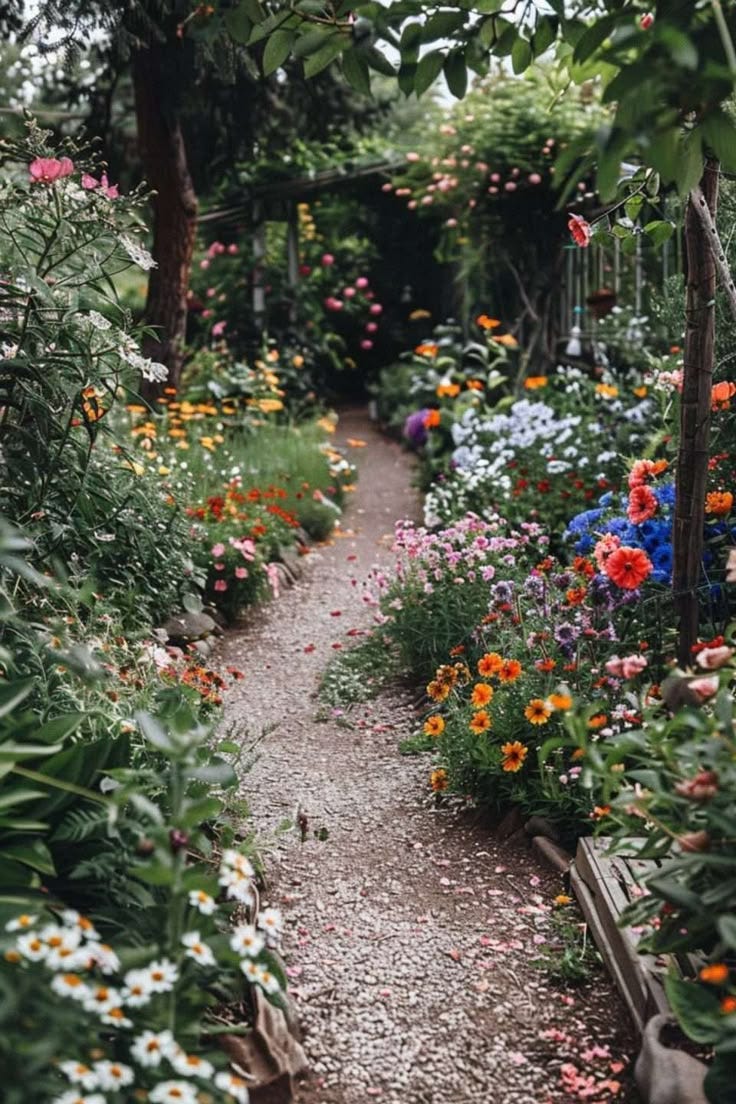How to design a garden: a beginner’s guide
As with most things in life, I’m doing this the only way I know how: with an enthusiastic but entirely unqualified 'let's see how this goes' -approach.
I have no idea what I’m doing.
That’s the honest truth. I have an image in my head of a perfectly designed garden—lush but structured, charming but practical, a space that somehow magically works for morning coffee, lazy afternoons in the sun, children tearing around, and peaceful evening drinks. And a gorgeous kitchen garden of course, brimming with vegetables grown from heritage seeds.
A garden that looks effortlessly put together, as though it’s always been that way.
Things aren’t quite there yet in my soon-to-be Georgian garden. It has a lot of good things going on for it, but it’s a little too scruffy currently. Some TLC and layout sprucing up is needed to make most of it.
So, as with most things in life (including my interior design projects), I’m approaching this the only way I know how: with an enthusiastic but entirely unqualified deep dive into research.
If you, like me, have ever thought about designing a garden but felt overwhelmed by where to start, this is for you. Consider this post a beginner’s guide to figuring it out- no prior expertise required.
contains affiliate links
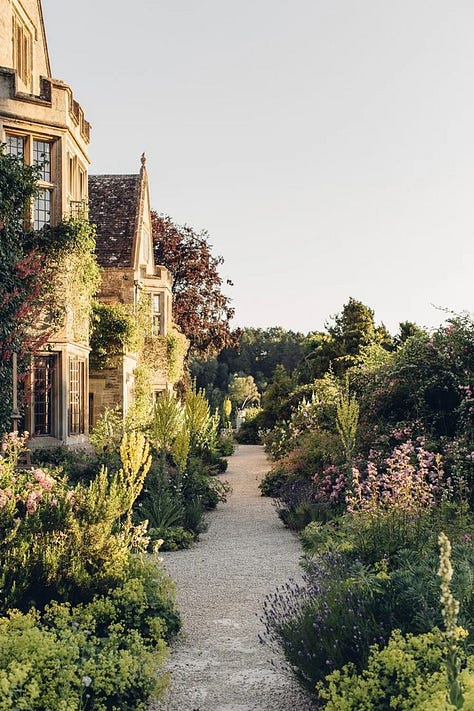
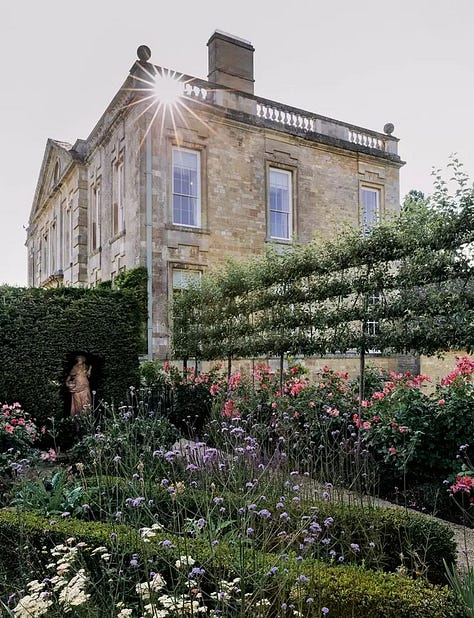
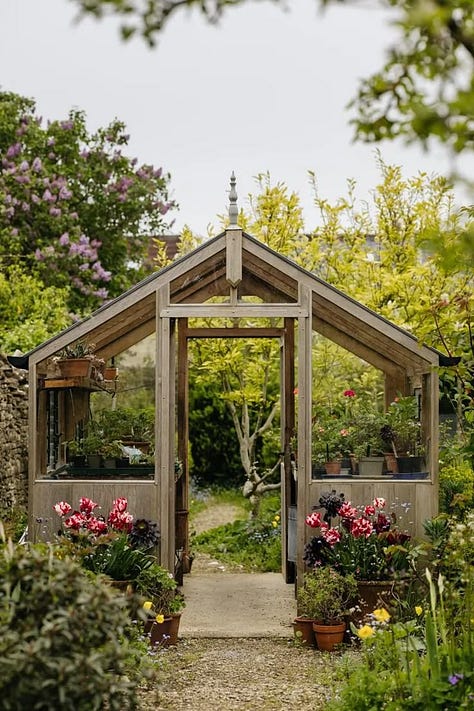
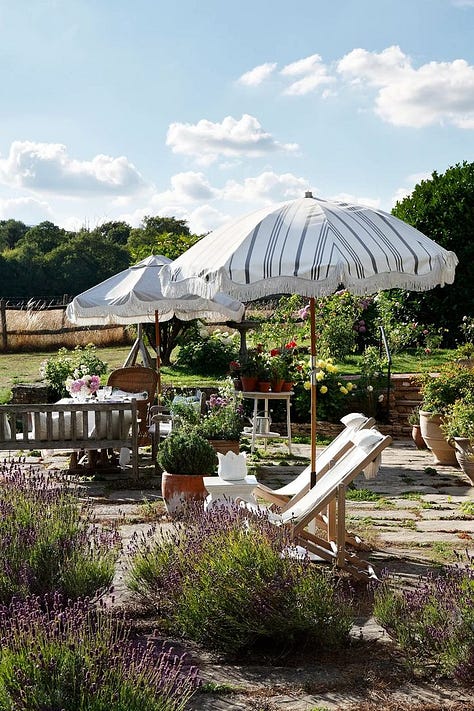
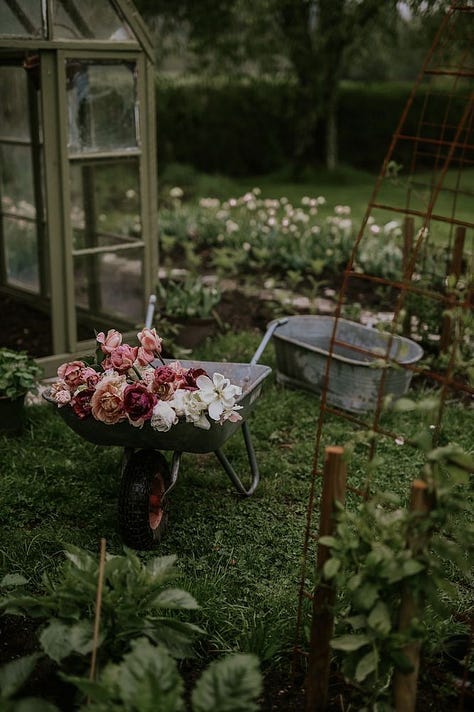
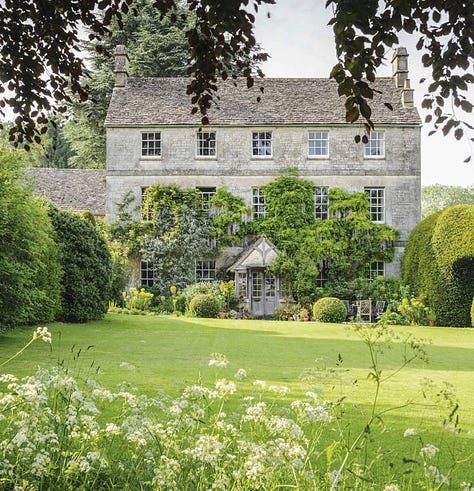
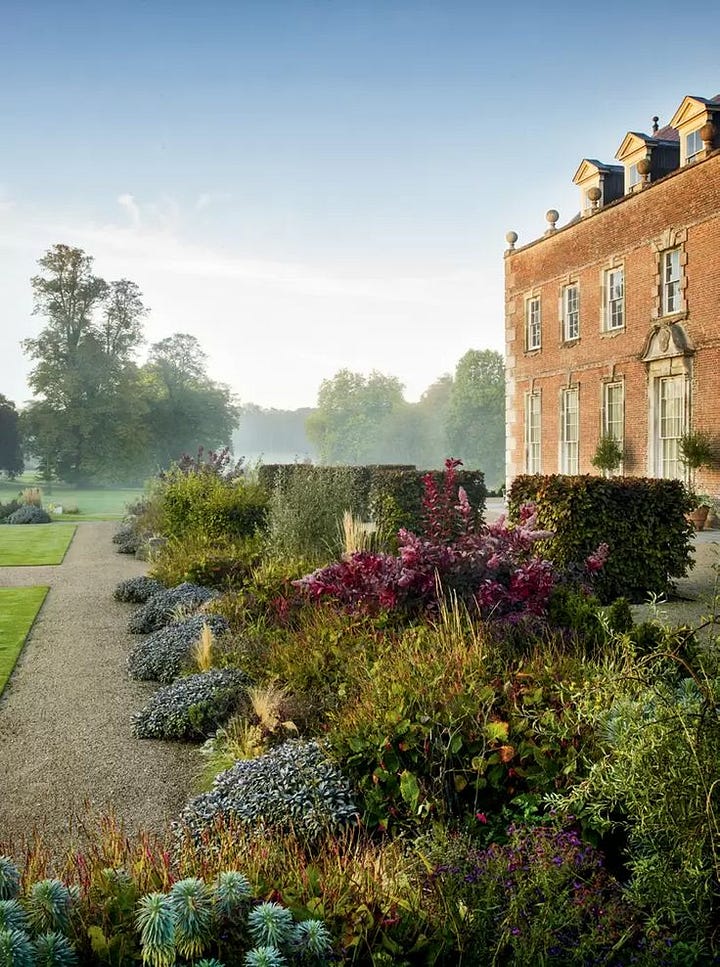
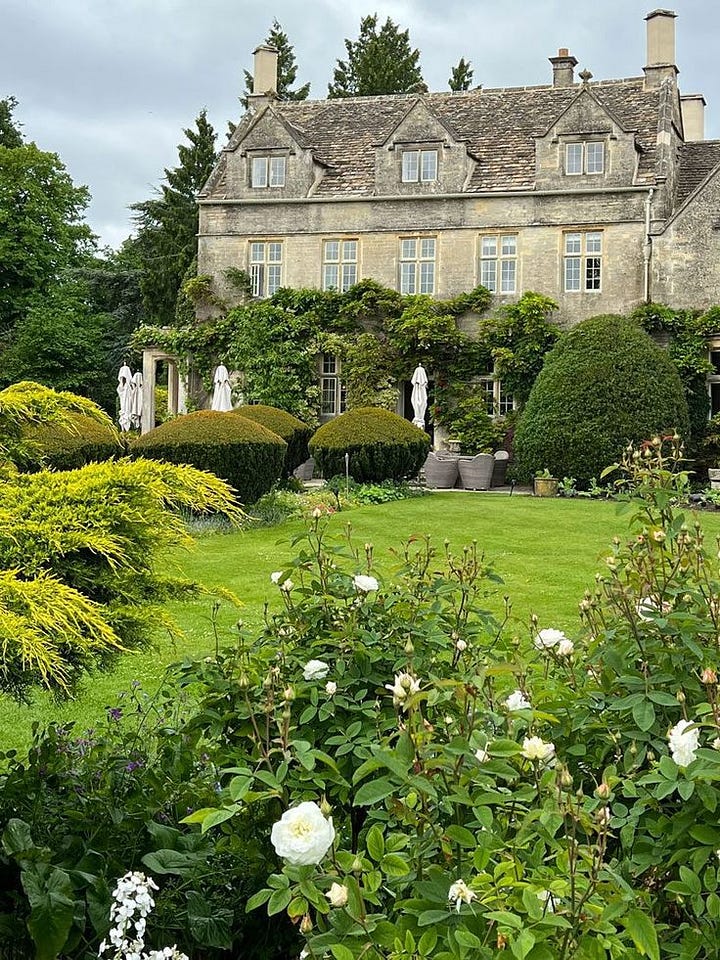
Step One: How Do You Want It to Feel? (Not Just Look)
Before diving into the nitty gritty — soil types and paving patterns and whether you can sneak a small greenhouse next to the water feature— I started with a simpler question: what do I want the garden to feel like?
Not in a woo-woo way (though I’m not above woo-woo), but genuinely — when I step outside, what mood am I trying to create? This is the same question I ask when I start a interior styling or design project. I want to create spaces that make me feel like I’ve arrived home, something that goes below the surface of looking good.
Do I want a grand showstopper of a garden? Somewhere structured and formal? A wild and wavy meadow of chaos? Something that requires minimal upkeep? Or just a quiet, pretty spot for morning coffee and letting the laundry dry in peace?
So much garden advice starts with the design, but if you ask me, it should start with the vibe. And this is a brilliant moment to make a mood board — physical or digital. Pinterest is the obvious go-to, but I also ended up with a slightly chaotic Google Drive folder titled “Garden of dreams,” full of Georgian frontages, wild rose arches, and gravel paths in soft, chalky tones.
If you would like to read the full post, see a video of the front of the house and pictures how the new garden is looking now, and follow the progress of creating my dream garden, consider becoming a paid subscriber to have full access. You can get 50% off from the yearly subscription here:
Some helpful prompts to get you started:
What’s your garden for? Eating? Entertaining? Escaping your family?
Are you drawn to symmetry and structure, or a bit of wildness?
Do you want year-round interest, or a big seasonal wow?
What kind of upkeep can you realistically handle? (Key word: realistically.)
You can use your answers to create a master garden plan, it does need to be perfect, but it’ll help you in the future especially if you are going to do parts of your garden in stages like me. I wrote a few notes and roughly sketched where I thought things might go: seating area here, raised beds there, a very hopeful dotted outline for a future greenhouse. It didn’t need to be final. It just needed to give me something to work from.
I’ve shared some simple landscape plans in the Sketching It Out (Even If You Can’t Draw)- section below, so you can get an idea how yours could look like.
Step Two: Understanding the Lay of the Land (Literally)
Here’s what I paid attention to—and if you’re designing your own garden, you might want to do the same:
Which way does your garden face? It’s a good question to ask before you start sketching out borders or picking plants. The direction your garden faces affects how much sun it gets throughout the day, which means it also affects where your plants will thrive—and where you’ll want to put your morning coffee chair or evening spritzer bench.
If you don’t know the direction of your garden off by heart, it’s easy to check. Stand with your back to the house, looking out into the garden. Now use the compass app on your phone (most phones have one built in) to see which way you’re facing. That’s the direction your garden faces.
If it’s south-facing, lucky you—you’ll get sun for most of the day. North-facing gardens stay shady near the house but may get light at the far end. East-facing gets lovely morning sun, while West-facing gardens soak up the evening rays.
Once you know the aspect, it’ll help you plan where to plant, where to sit, and where to avoid melting in the midday sun.
Understanding your soil's pH is important too, as it affects nutrient availability and plant health. I’ve bought this simple pH kit for testing various samples around the garden to find out if the soil is acidic, neutral, or alkaline.
Are there areas that feel particularly sheltered or exposed? Where do your eyes naturally land when you look out the window? Do you have noisy neighbours, or a road that needs softening with planting or a water feature?
This step made me realise how much of garden design isn’t about what you add, but what you notice. Where light falls. Where you want to sit. What you want to hide (our bins). What you want to draw attention to (our very beautiful stone wall, the views over valley).
Step Three: Hard Landscaping & Materials
This is the part that gives a garden its backbone. The bones, the frame, the punctuation marks between all the soft, green bits. Paths, patios, steps, edges—everything that shapes how you move through the space and how it all holds together.
I’ve been researching different materials (there is a whole world of gravel grades, who knew), and I thought I’d share a few thoughts while they’re still fresh in my mind.
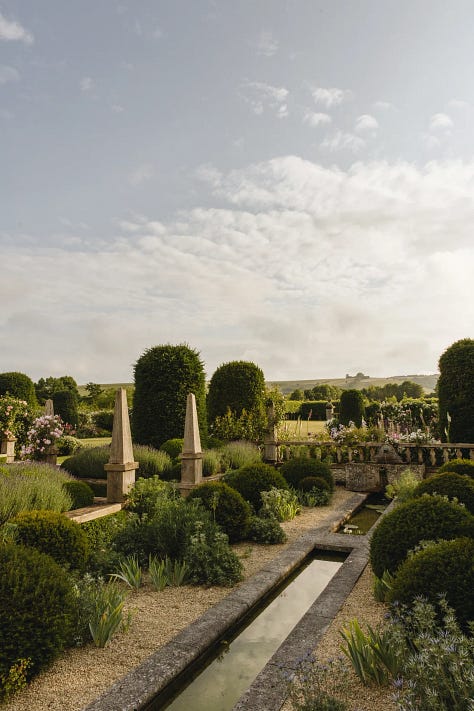

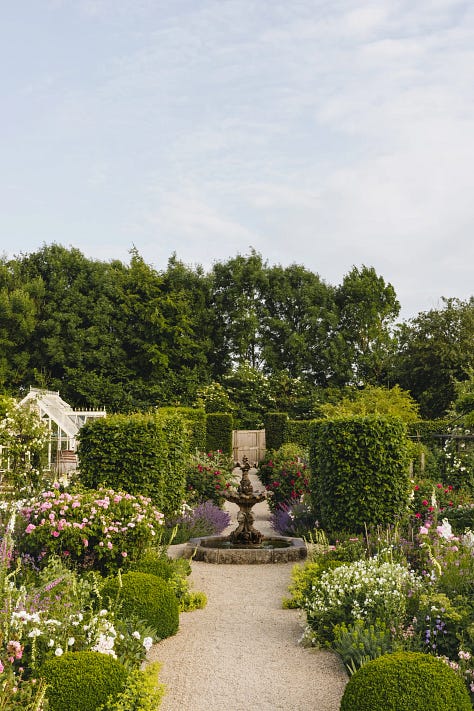
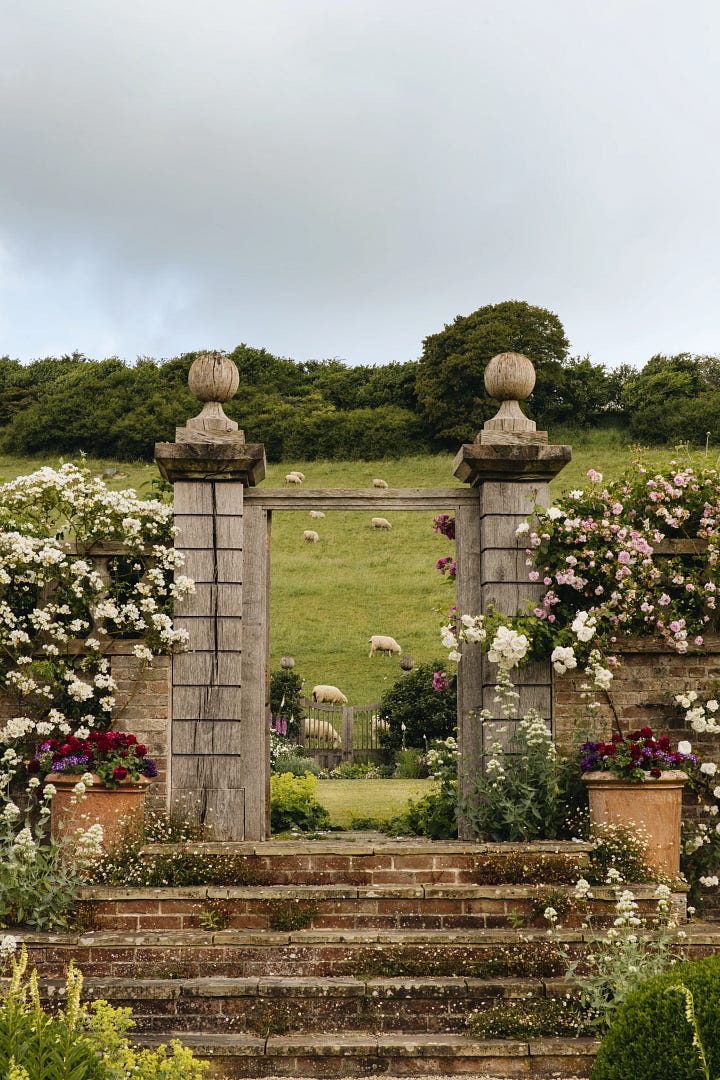
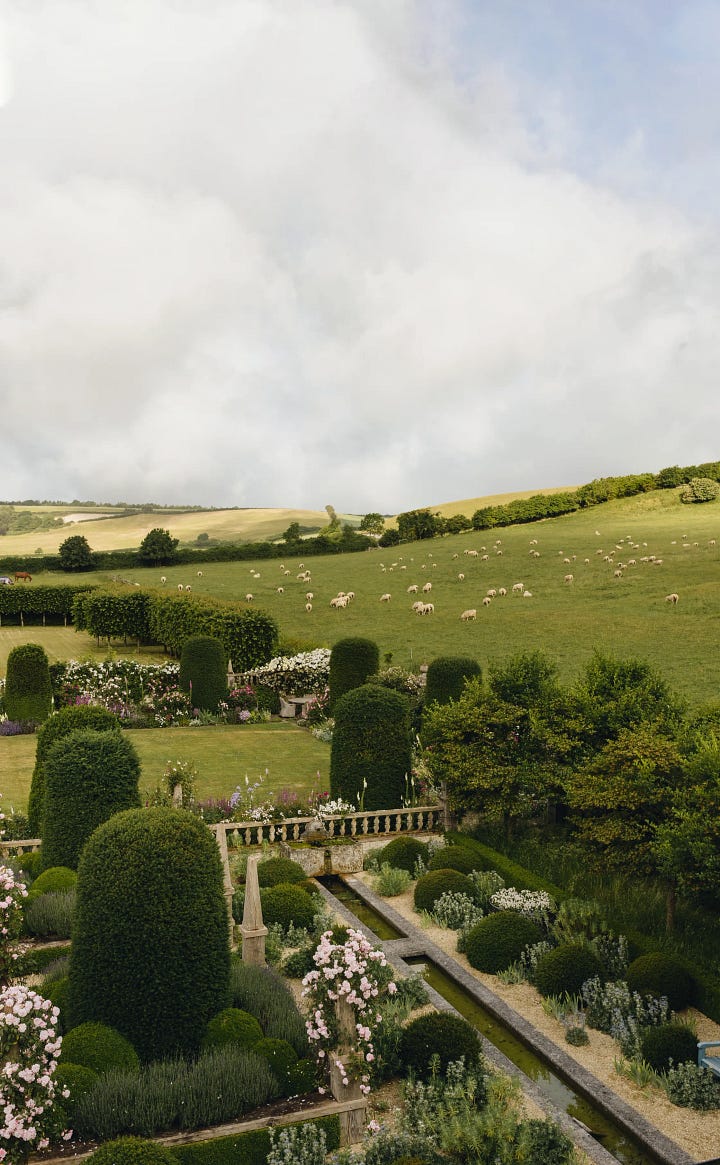
Cobblestones are impossibly charming. Proper storybook stuff. They instantly give a sense of age and permanence, like they’ve been there for centuries and will stay for a few more. But they are not what you’d call practical underfoot. Uneven and a bit wobbly, they’re lovely to look at but slightly perilous if you’re wheeling a barrow or attempting any kind of graceful exit with a cocktail in hand. Still, if used sparingly, they’re magic.
Clay pavers are soft in tone, beautifully varied, and look especially elegant laid in herringbone or basketweave patterns. They’ve got that elusive mix of rustic and refined — as at home in a cottage garden as in a grander setting. I keep picturing them slightly mossy around the edges, sun-warmed underfoot, leading to a kitchen garden gate.
Gravel paths are a classic, and I particularly love the way they can meander, making a garden feel gently discovered rather than laid out in one go. But gravel does have a few demands — it needs proper edging to stop it creeping into your flower beds and regular raking to keep it looking neat. Apparently, it’s one of those “looks easy, needs tending” features. Like linen trousers or fringe.
Then there’s lawn and path edging, to create tidy lines that keep your borders in check without shouting about it. Great if you’re after that slightly wild but still deliberate look, where the plants are doing their thing but the paths are saying, ‘this way, please.’
Alongside all the materials, I’ve been thinking a lot about flow — how paths guide the eye and the foot, how you move from one area to another, and how texture can help with that. A change in surface — from brick to gravel, say — is a lovely way to signal a shift in pace or purpose, from the formal bit near the house to the more relaxed garden beyond. And it’s the kind of design choice that saves you time (and faff) later, if you get it right now.
Ultimately, the goal is to make the garden feel as though it belongs. As if the paths have always been walked, the steps always led there, and the patio was simply waiting for a table and two chairs and the first warm morning of spring. I want the whole thing to feel considered but not contrived — no Pinterest-hack patchwork, just a space that quietly knows what it is.
Step Four: Plants (a.k.a. The Bit I’m Most Excited About)
I could write an entire post, or several, on this (and probably will), but for now, my main takeaway is this: right plant, right place.
There’s no point planting sun-loving lavender in deep shade, or fussy roses in dry, exposed soil and expecting them to thrive. I’m trying to be thoughtful and (mostly) realistic about what will actually work.
What I do know is that I’m aiming for a balance — structure and softness. Some bones that will stay looking good in January (boxwood, yew, evergreen shrubs), and then the dreamy stuff layered over the top: billowing perennials, spires of foxgloves, drifts of nepeta, those mad, floppy roses that fling themselves over everything in June.
I’m also learning that planting is as much about rhythm and repetition as it is about variety. I used to think more was more, but now I’m realising the real magic comes from a few well-chosen plants used generously in repeating patterns— not a random selection of everything that caught my eye at the garden centre.
Planting styles I’m drawn to:
Cottage garden: loose, romantic, bees and butterflies everywhere.
The classic English garden: those stone walls and old roses, winding paths edged with lavender.
Formal structure with soft planting: think neatly clipped box or yew hedges holding space for looser borders to do their thing.
My Own Brief (and why you need one too)
If you would like to read the full post, see a video of the front of the house and pictures how the new garden is looking now, and follow the progress of creating my dream garden, consider becoming a paid subscriber to have full access. You can get 50% off from the yearly subscription here:



